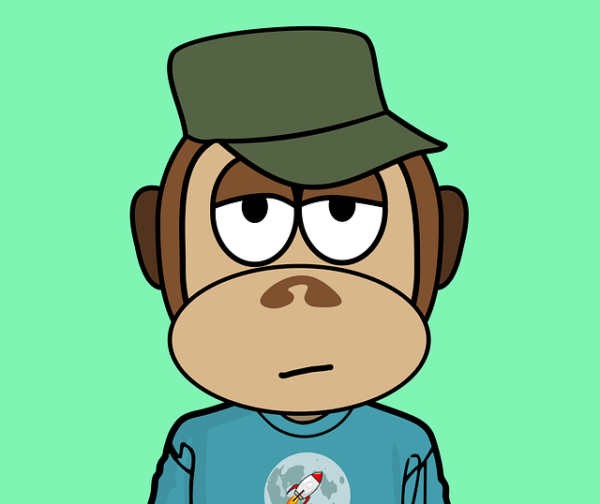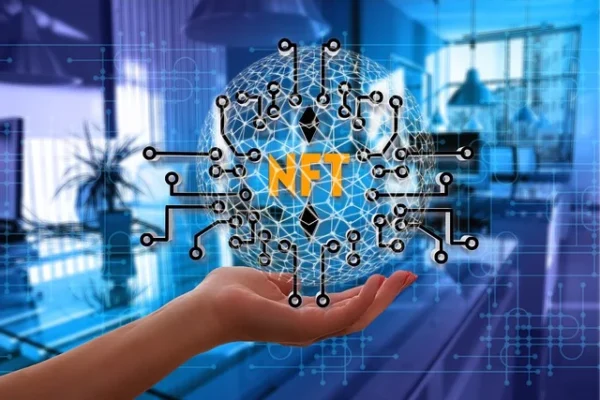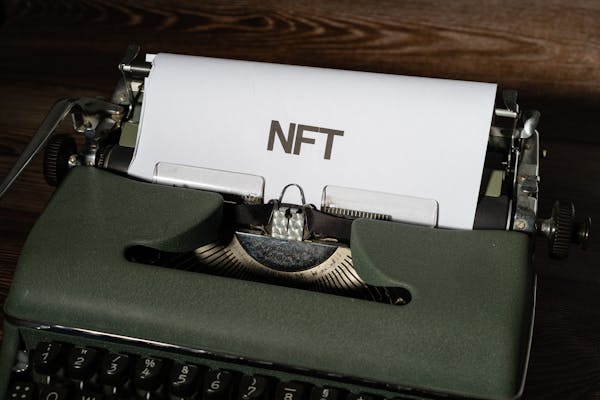NFTs (Non-Fungible Tokens) and the Creative Economy: Exploring the Boom in Digital Art and Collectibles
Table of Contents
Introduction to NFTs and the Creative Economy

A renaissance in the creative economy has been triggered by the growth of NFTs, giving writers, musicians, artists, and other creators new ways to monetize their work and interact with audiences. The appeal of digital art in particular has increased as a result of artists using NFTs to tokenize their works and sell them as collectibles on different NFT markets. Because NFTs are decentralized, creators can connect directly with fans and collectors and maintain more control over their intellectual property by eschewing traditional gatekeepers and middlemen. With their increasing popularity, NFTs are changing the face of the creative economy by providing artists with never-before-seen chances to market their works and exhibit their abilities in the digital era.
Having Knowledge of Non-Fungible Tokens (NFTs)
Having knowledge of Non-Fungible Tokens (NFTs) opens the door to understanding a groundbreaking innovation in the digital realm. Unlike cryptocurrencies such as Bitcoin or Ethereum, which are interchangeable and hold the same value, NFTs represent unique digital assets with distinct characteristics. These tokens are indivisible and cannot be replicated, making them ideal for representing ownership or proof of authenticity for digital items like art, music, videos, virtual real estate, and more. NFTs are built on blockchain technology, which ensures their immutability, transparency, and security. Each NFT contains metadata that specifies its attributes, provenance, and ownership history, providing a verifiable record of its existence and ownership.

The rise of NFTs has transformed various industries, particularly the art world, by democratizing access to digital art and enabling creators to monetize their work in novel ways. Artists can tokenize their digital creations as NFTs and sell them directly to collectors on online marketplaces, bypassing traditional intermediaries like galleries and auction houses. This direct-to-consumer model not only empowers artists to retain greater control over their intellectual property but also allows them to earn royalties from secondary sales of their NFTs, thanks to programmable smart contracts embedded in the tokens. Moreover, NFTs have facilitated the emergence of new forms of digital art, including generative art, virtual reality experiences, and interactive installations, which push the boundaries of creativity and innovation in the digital age.
However, while NFTs offer exciting opportunities for creators and collectors alike, they also raise important questions and considerations regarding ownership, copyright, and environmental sustainability. The speculative nature of the NFT market has led to concerns about price volatility, market manipulation, and the potential for scams and fraud. Moreover, the energy-intensive process of minting and trading NFTs on blockchain networks, particularly those using proof-of-work consensus mechanisms like Ethereum, has drawn criticism for its environmental impact. As the NFT ecosystem continues to evolve and mature, stakeholders must address these challenges and work towards building a more inclusive, sustainable, and responsible digital economy.
The Rise of Digital Art and Collectibles
NFTs have transcended traditional boundaries, extending the notion of collectibles into the digital sphere. Beyond the realm of art, a myriad of digital assets, ranging from virtual trading cards and real estate to fashion items and even virtual pets, have been tokenized as NFTs. This groundbreaking expansion has unlocked a new frontier where individuals can own, trade, and collect these digital artifacts, reshaping the concept of ownership and value in the digital age.
Virtual trading cards, once confined to physical packs and albums, now exist as digital assets authenticated by NFTs, allowing collectors to showcase and trade their prized collections in digital spaces. Similarly, virtual real estate plots within virtual worlds, such as decentralized metaverses, have become coveted assets that can be bought, sold, and developed, mirroring the dynamics of real-world property markets. Moreover, digital fashion items, ranging from virtual clothing and accessories to avatars and wearables, have emerged as sought-after commodities in the metaverse, allowing users to express their individuality and style in digital environments.
In addition to their aesthetic appeal, these digital collectibles hold both sentimental and investment value, attracting a diverse array of collectors and enthusiasts. The ability to own and trade unique digital assets authenticated by NFTs imbues them with a sense of rarity and exclusivity, driving demand among collectors seeking to acquire coveted items. Furthermore, the speculative nature of the NFT market has fueled investment interest, with collectors and investors alike recognizing the potential for value appreciation over time. As a result, NFTs have created a vibrant and dynamic marketplace where individuals can participate in the digital economy while engaging in their passions and interests.

Criticisms and Challenges Surrounding NFTs
The rapid rise of Non-Fungible Tokens (NFTs) has brought about various criticisms and challenges that warrant careful consideration. One significant concern revolves around the environmental impact of NFTs, particularly those built on blockchain networks that utilize energy-intensive consensus mechanisms like proof-of-work. The process of minting and trading NFTs requires substantial computational power, leading to increased energy consumption and carbon emissions. This has prompted criticism from environmental advocates who argue that the carbon footprint associated with NFTs contradicts the goal of sustainability and exacerbates climate change concerns.
Another criticism of NFTs pertains to their potential for facilitating copyright infringement and intellectual property disputes. While NFTs provide a means of proving ownership and authenticity for digital assets, they do not inherently confer copyright ownership or licensing rights to the underlying content. This has led to instances where NFTs are minted and sold without the consent of the original creators, raising ethical and legal questions regarding the ownership and commercialization of digital art and other creative works. Additionally, the decentralized and pseudonymous nature of blockchain technology can complicate efforts to enforce copyright protections and hold infringers accountable.
Overall, while NFTs offer exciting opportunities for creators, collectors, and investors, they also pose significant challenges and risks that must be addressed. Addressing concerns related to environmental sustainability, copyright protection, market speculation, and regulatory oversight is crucial to fostering a sustainable and responsible NFT ecosystem that benefits all stakeholders involved.
The Future Potential
The ascent of NFTs merely represents the tip of the iceberg regarding their potential influence. As blockchain technology evolves, we anticipate witnessing further breakthroughs in this arena. Among the potential advancements is the concept of fractional ownership of high-value assets, which could democratize access to rare collectibles. By tokenizing these assets into NFTs, individuals could purchase fractional shares, enabling broader participation in ownership and investment opportunities previously limited to a select few.

Furthermore, the integration of smart contracts within NFTs holds promise for automating various processes, such as royalty payments to artists. With smart contracts embedded in NFTs, creators could establish predetermined terms specifying ongoing compensation for their work. This means that every time an NFT is sold or traded, the smart contract could automatically execute royalty payments, ensuring artists receive fair and transparent compensation for their creations, even as ownership changes hands multiple times. This innovation not only benefits artists but also enhances trust and transparency within the NFT ecosystem, fostering a more equitable and sustainable marketplace for digital assets.
